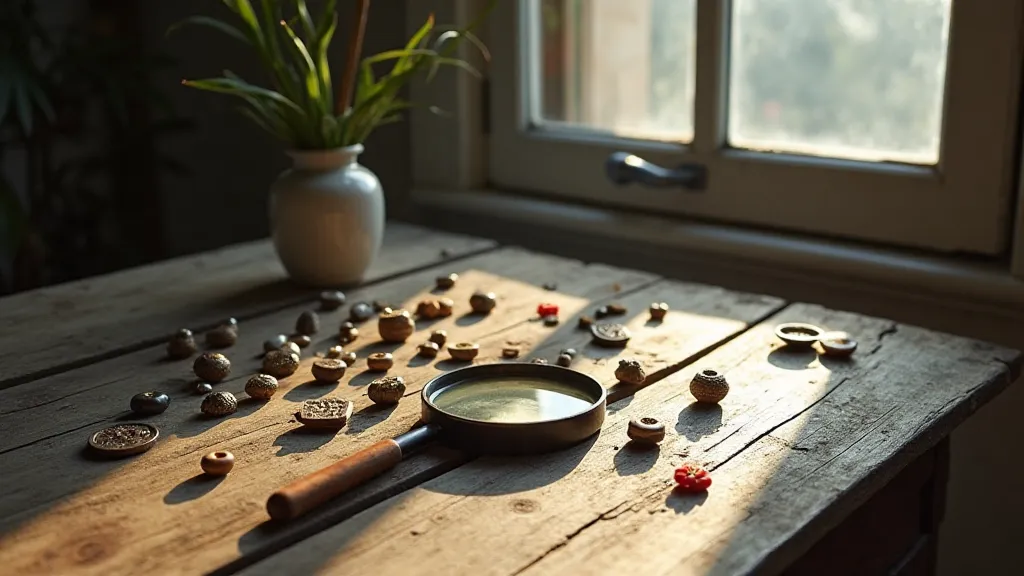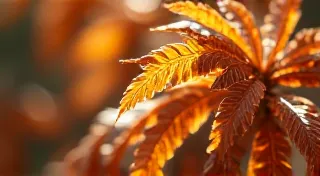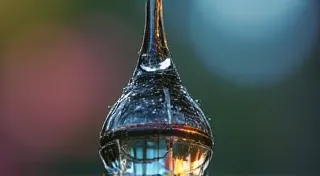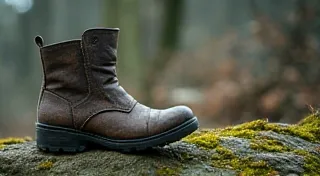The Button’s Alchemy: Transforming Castoffs into Treasured Artifacts
There's a quiet magic in holding a vintage button. It’s not the glitter of precious stones, nor the sheen of polished metal. It’s something deeper, a connection to a past that’s tangible, held in the palm of your hand. These small, often overlooked objects—discarded, forgotten, or simply outgrown—possess a silent history, a legacy whispering tales of eras gone by. Collecting vintage buttons isn’t just about accumulating pretty things; it’s about unearthing stories, appreciating craftsmanship, and participating in a kind of alchemical transformation: turning castoffs into treasured artifacts.
My own fascination began innocently enough. As a child, I’d visit my grandmother’s attic, a sprawling kingdom of forgotten memories. Amongst the trunks overflowing with lace doilies and faded photographs, a small, tin box caught my eye. Inside, nestled in tissue paper, lay a collection of buttons – pearlized glass, intricately carved celluloid, sturdy metal – each a miniature work of art. I remember the thrill of holding them, imagining the garments they once adorned, the lives they touched. It wasn't just about the buttons themselves; it was about the narrative they evoked. That early exposure sparked a lifelong passion.
A History Fastened: Buttons Through the Ages
The history of buttons is surprisingly rich. While decorative pins and brooches existed for centuries, the true button, as we know it, emerged relatively late. Early forms were often simple, functional closures – leather thongs, wooden toggles, and fabric ties. The shift towards decorative buttons began in the 14th century, coinciding with the rise of fitted clothing. Initially, buttons were status symbols, often crafted from precious materials like gold, silver, and jewels. They were sewn onto garments as much for display as for fastening. During the Renaissance, buttons became incredibly ornate, sometimes featuring elaborate carvings and intricate designs. The increasing popularity of tailoring and the demand for increasingly elaborate clothing drove innovation.
The Industrial Revolution drastically changed button production. The invention of machinery allowed for mass production, making buttons more accessible to a wider population. New materials like vulcanized rubber, casein (derived from milk), and early plastics—like celluloid—entered the scene, offering a wider range of colours, textures, and forms. The shift democratized button ownership, moving them from the exclusive domain of the wealthy to everyday wardrobes.
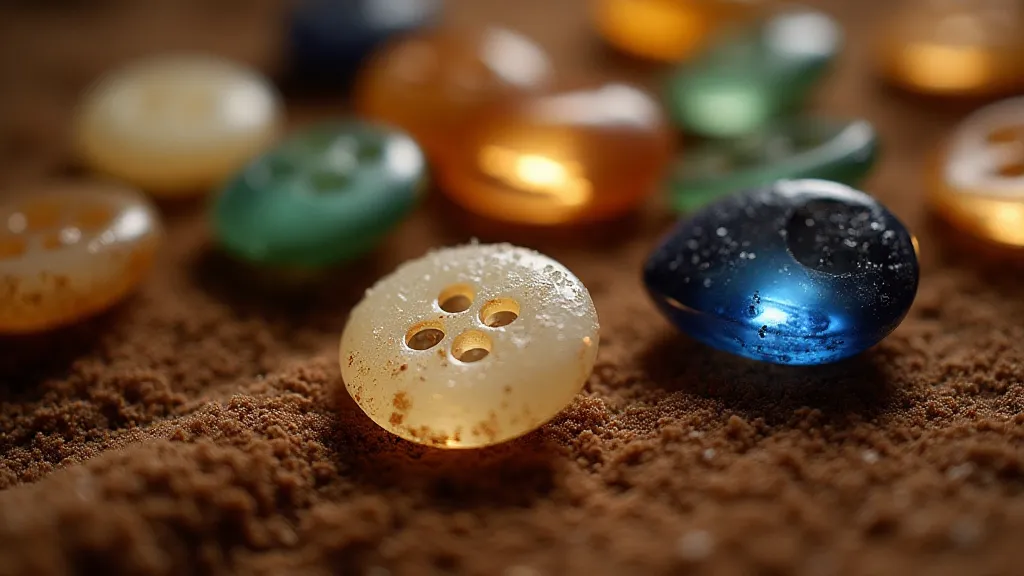
The Art of Reclamation: Repair, Restoration, and Reimagining
The journey of a vintage button often begins with abandonment. Lost from a cherished garment, discarded during a wardrobe clear-out, or unearthed from a forgotten box – these buttons find themselves adrift, their purpose seemingly lost. This is where the collector, and often the restorer, steps in. The beauty of collecting isn’t solely in acquisition; it’s frequently in the act of preservation.
Restoration isn’t always about returning a button to pristine condition. Often, it’s about stabilizing it, preventing further deterioration. A chipped pearl button might have a tiny amount of carefully applied epoxy to mend the fracture, not to erase the damage, but to stop it from spreading. A tarnished metal button might be gently cleaned, revealing its original luster, while retaining the patina of age. These subtle interventions are acts of respect, acknowledging the button’s history while safeguarding its future.
Beyond restoration, vintage buttons have inspired a wave of creative repurposing. Artists and craftspeople have transformed these tiny treasures into mosaics, jewelry, and decorative accents. Imagine a picture frame adorned with iridescent glass buttons, reflecting light in a myriad of colours, or a textile artwork pieced together from a constellation of antique brass buttons. These are examples of true alchemy – turning humble castoffs into dazzling works of art.
Understanding Craftsmanship and Identifying Markings
Appreciating vintage buttons requires an understanding of the craftsmanship that went into their creation. Early buttons were often hand-carved from materials like bone, horn, or wood. The skill required to produce these intricate designs is truly remarkable. As machinery became more prevalent, the techniques evolved, but the artistry persisted. The quality of the materials used—the richness of the pearl, the clarity of the glass, the strength of the metal—is a testament to the dedication of the artisans who created them.
Identifying markings on vintage buttons can provide valuable clues about their origin and age. Many manufacturers stamped their logos or patents onto the reverse of their buttons. While these markings can be faded or obscured, they are often essential for accurate identification. Researching these markings can lead to fascinating discoveries about the button’s history and the company that produced it. Some markings might reveal the patent date, placing the button within a specific timeframe.
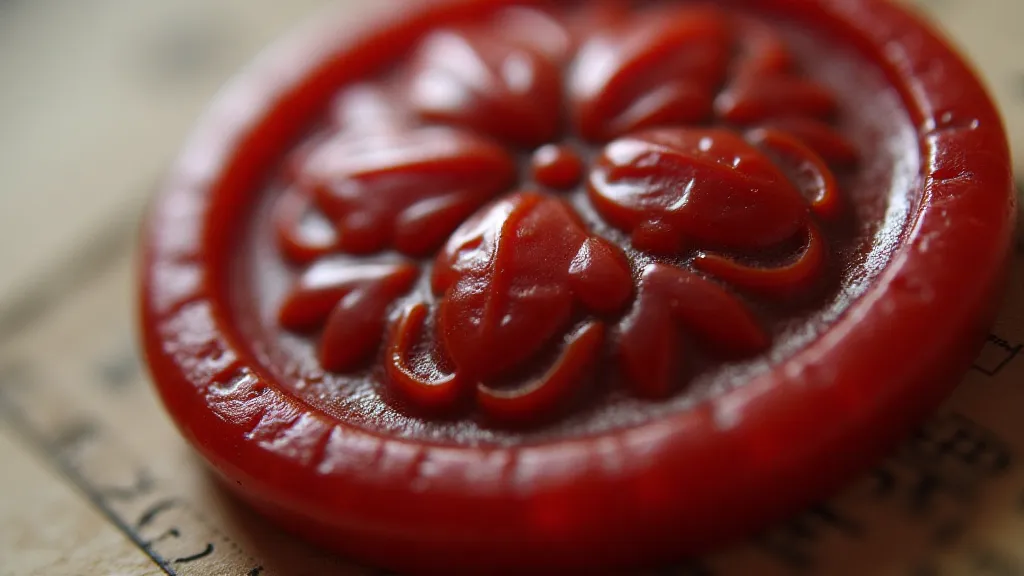
Beyond the Pretty: The Emotional Connection
Collecting vintage buttons is more than just a hobby; it's a journey into the past, a connection to lives lived and stories untold. Holding a button, contemplating its age and its provenance, evokes a sense of wonder and appreciation. Each button represents a moment in time, a connection to a past that is both distant and tangible. It’s a form of historical empathy – a chance to connect with the people who wore the garments adorned with these small treasures.
For me, the real reward isn't the acquisition of rare or valuable buttons. It’s the quiet satisfaction of preserving a piece of history, of ensuring that these small artifacts continue to tell their stories for generations to come. It’s about recognizing the beauty in the ordinary, the value in the discarded, and the magic that lies within the seemingly insignificant. It's about appreciating the ingenuity and artistry of those who came before us, and celebrating the enduring power of small, seemingly insignificant objects to connect us to the past.
